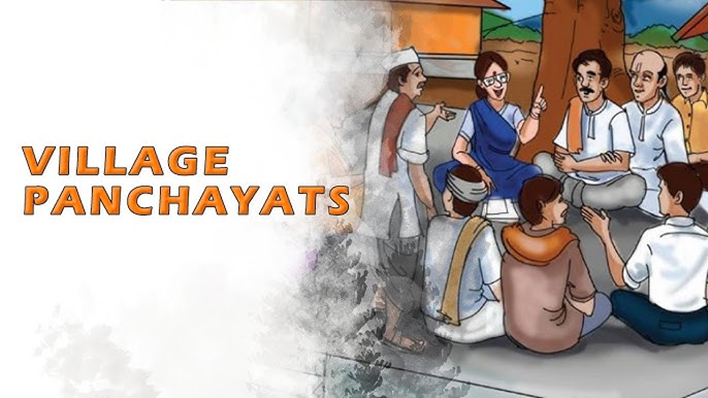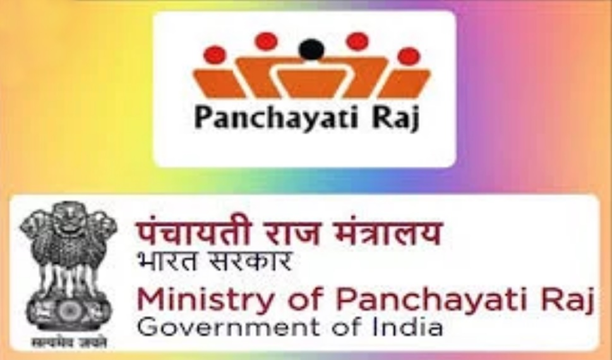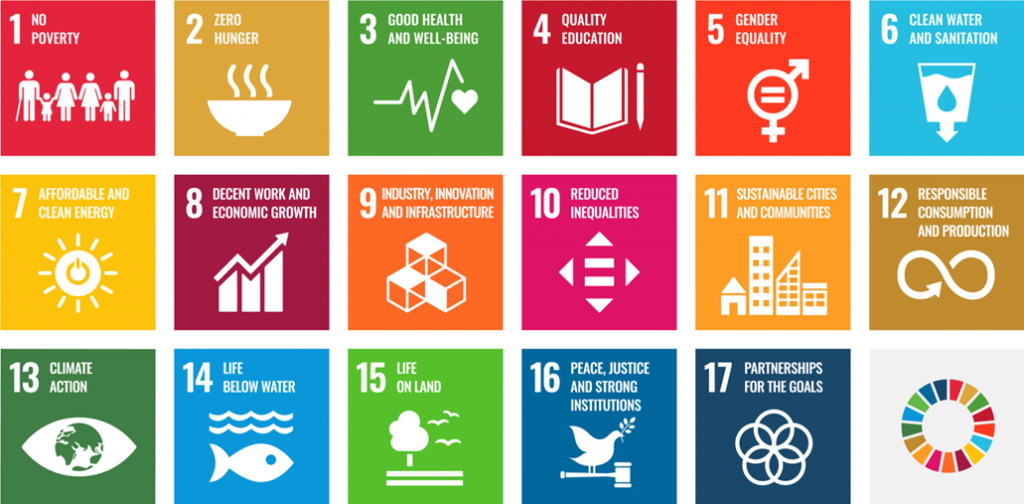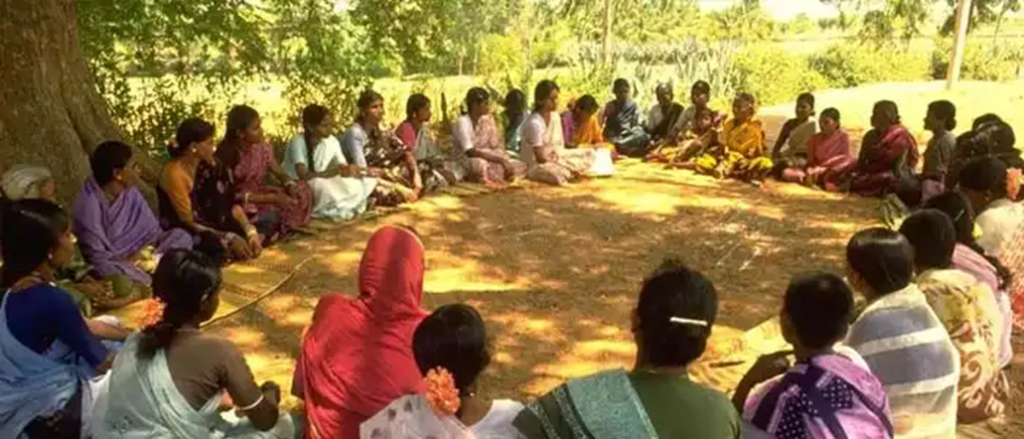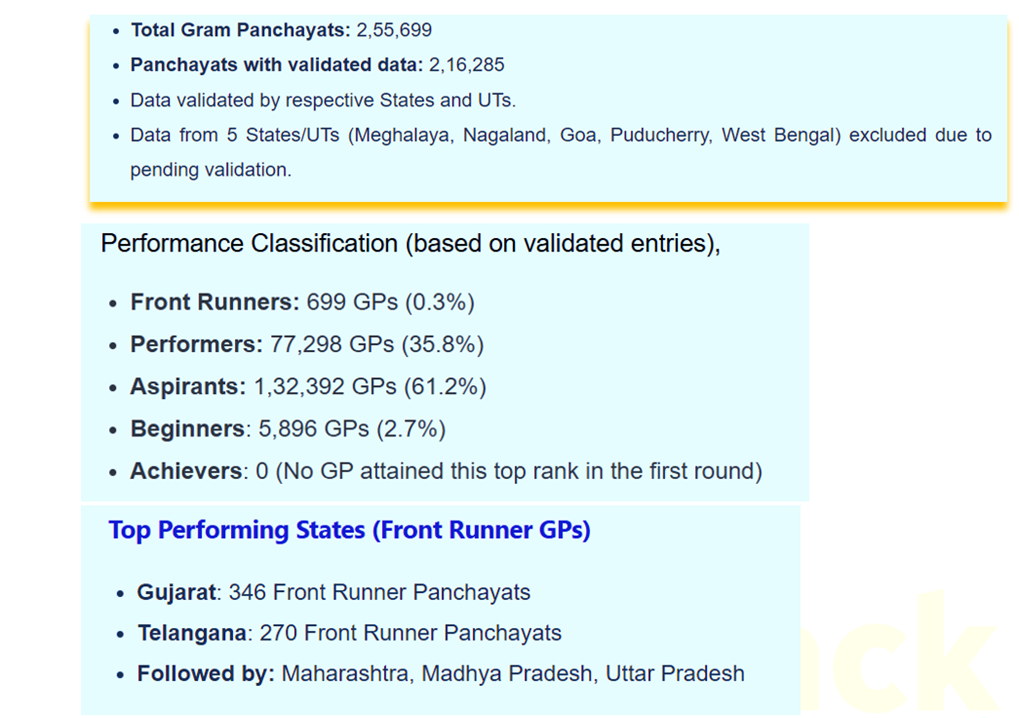The government’s inaugural Panchayat Advancement Index (PAI) was launched, ranking over 2.16 lakh panchayats based on their performance and progress towards achieving Sustainable Development Goals (SDGs).
What Is Panchayat Advancement Index Why It Is Introduced
Why In News
- The government’s inaugural Panchayat Advancement Index (PAI) was launched, ranking over 2.16 lakh panchayats based on their performance and progress towards achieving Sustainable Development Goals (SDGs).
What Is The Panchayat Advancement Index
- According to the Ministry of Panchayati Raj (MoPR), it is a multi-dimensional index used to assess the implementation of Localization of Sustainable Development Goals (LSDGs) across nine broad themes.
- These are poverty-free and enhanced livelihoods in panchayat, healthy panchayat, child-friendly panchayat, water sufficient panchayat, clean and green panchayat, panchayat with self-sufficient infrastructure, socially just and socially secured panchayat, panchayat with good governance and women-friendly panchayat.
- Under these brackets, performances on 144 targets were measured. “The PAI uses 435 unique local Indicators (331 mandatory & 104 optional) consisting of 566 unique data points across 9 themes… involving LIFs [Local Indicator Framework],” the MoPR said in a statement.
- The panchayats were then scored on a scale of 0-100 based on these indicators and ranked in one of five categories: Achiever (90-100), Front Runner (75-90), Performer (60-75), Aspirant (40-60) and Beginner (below 40).
Why Was The PAI Introduced
- In 2015, the United Nations devised 17 Sustainable Development Goals (SDGs) to be achieved by member countries by 2030, such as No Poverty, Zero Hunger, Reduced Inequality, and Climate Action. These goals cover 269 targets whose progress is monitored through 231 indicators.
- While the UN monitors the implementation progress of SDGs at the country level, India’s top government think tank, the NITI Aayog, tracks state-wise progress through its SDG India Index that was launched in 2018. In recent years, the localisation of SDGs has been emphasised.
- Recognising the crucial role of panchayats in local governance, the government has focused on aligning them with the SDGs. The PAI was thus developed as “a key metric for assessing progress at the grassroots level, aiding in the formulation of localized strategies and targets for inclusive rural development.”
- Sanyukta Samaddar, a former NITI Aayog Advisor (SDGs) and architect of SDG India Index, said, “The PAI is a logical fruition of India’s first sub-national measure of SDGs which was launched by Niti Aayog way back in 2018 (the SDG India Index)… (It) has since then become a powerful policy tool to trigger action.”
Does The PAI Cover All Panchayats
- No. There are over 2.55 lakh panchayats in India, but data was received from only 2.16 lakh gram panchayats in 29 states/Union Territories after due validation by the states and UTs.
- “PAI Data of 11,712 Gram Panchayats (GPs)/Traditional Local Bodies (TLBs) from 5 States/UTs (Meghalaya, Nagaland, Goa, Puducherry and West Bengal) have not duly validated by the concerned State/UT,” the statement said.
Observations
